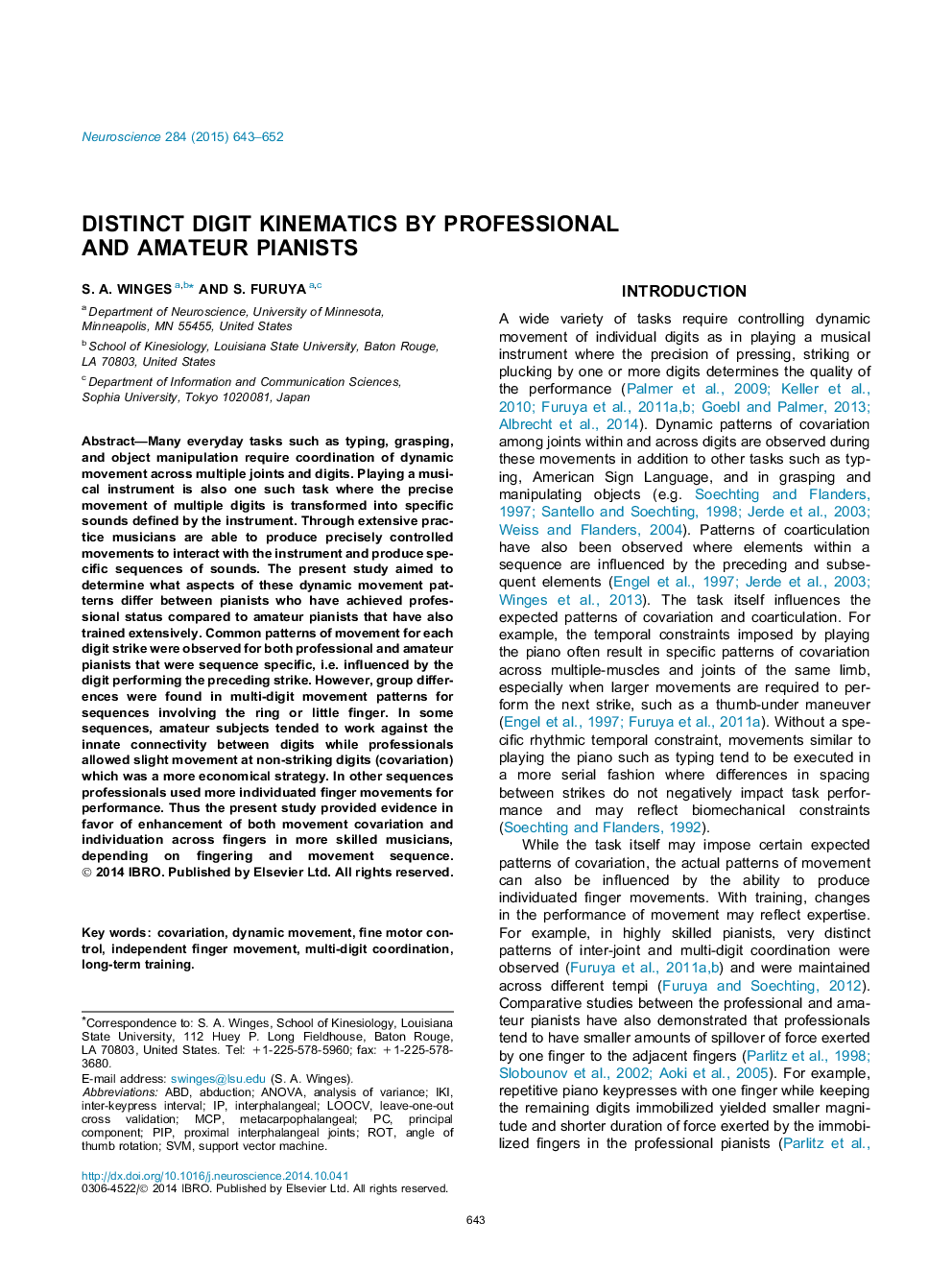| Article ID | Journal | Published Year | Pages | File Type |
|---|---|---|---|---|
| 6272922 | Neuroscience | 2015 | 10 Pages |
â¢Skilled musicians exhibit enhanced covariation and individuation specific to movement sequence.â¢Professional and amateur pianists differ in movement pattern for ring and little finger sequences.â¢Amateur pianists appeared to work against the innate connectivity between digits.
Many everyday tasks such as typing, grasping, and object manipulation require coordination of dynamic movement across multiple joints and digits. Playing a musical instrument is also one such task where the precise movement of multiple digits is transformed into specific sounds defined by the instrument. Through extensive practice musicians are able to produce precisely controlled movements to interact with the instrument and produce specific sequences of sounds. The present study aimed to determine what aspects of these dynamic movement patterns differ between pianists who have achieved professional status compared to amateur pianists that have also trained extensively. Common patterns of movement for each digit strike were observed for both professional and amateur pianists that were sequence specific, i.e. influenced by the digit performing the preceding strike. However, group differences were found in multi-digit movement patterns for sequences involving the ring or little finger. In some sequences, amateur subjects tended to work against the innate connectivity between digits while professionals allowed slight movement at non-striking digits (covariation) which was a more economical strategy. In other sequences professionals used more individuated finger movements for performance. Thus the present study provided evidence in favor of enhancement of both movement covariation and individuation across fingers in more skilled musicians, depending on fingering and movement sequence.
